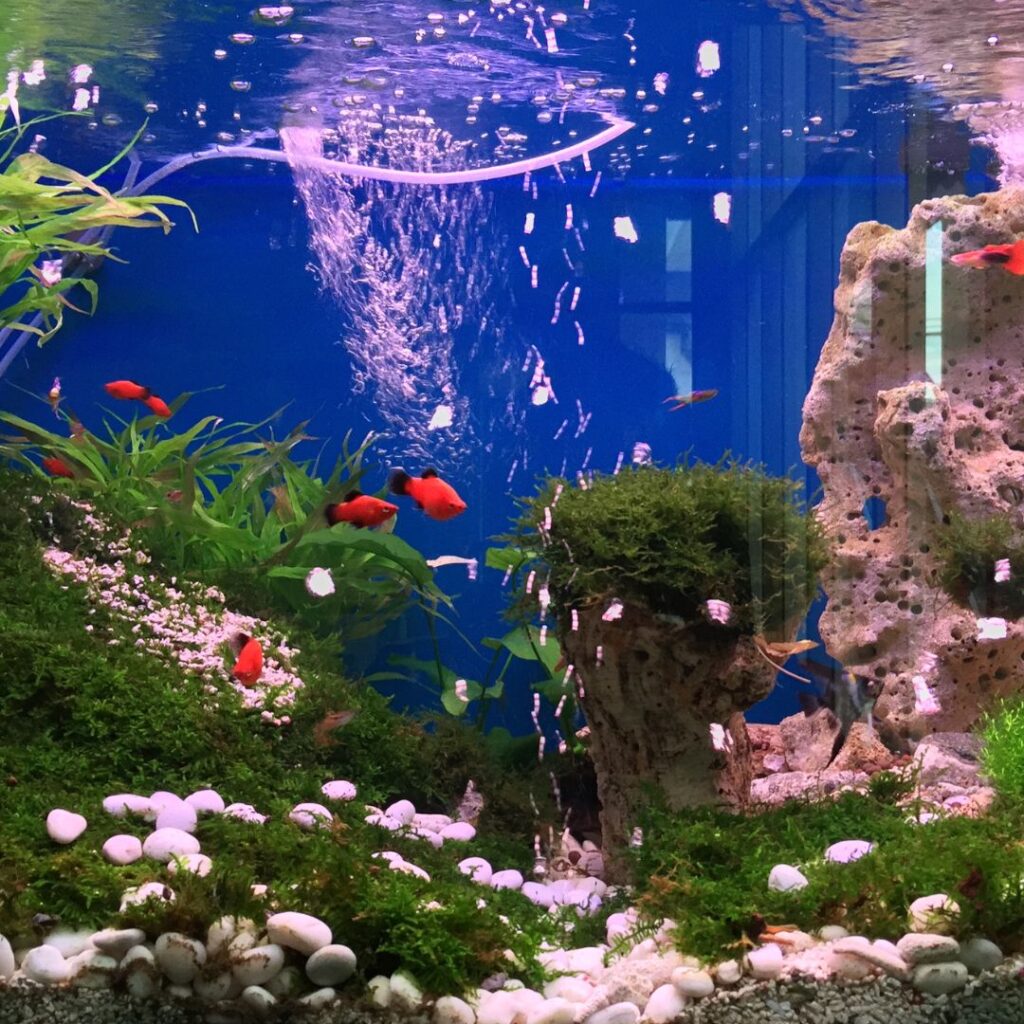
Fishkeeping is wonderful, but water chemistry is the key. It can break or make your aquarium live. Bad water can make your fish sick, or worse. High levels of minerals and harmful chemicals can be deadly. The good news? Everything can be fixed with the right knowledge and some tips.
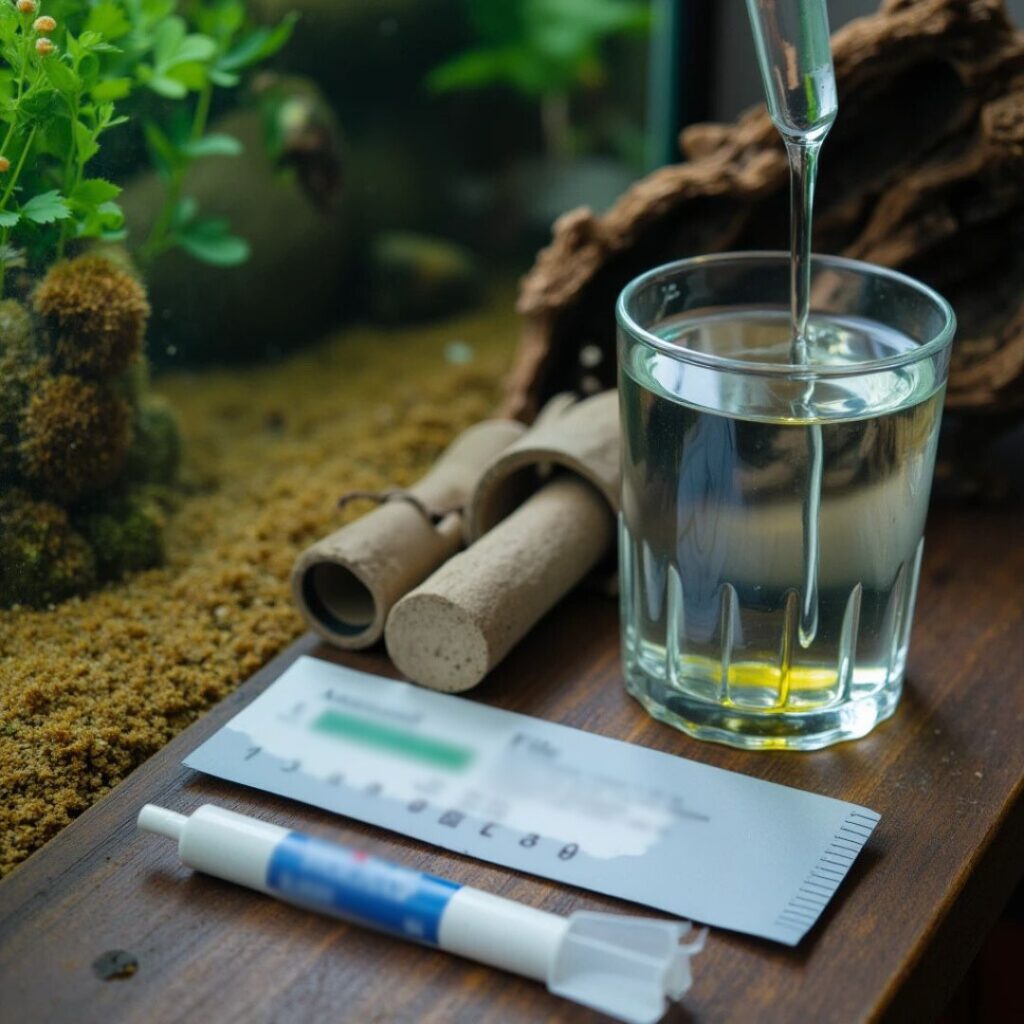
Before we learn how to take care of our fish tank, we should explain some fundamental basics:
GH (General Hardness): It measures dissolved minerals like calcium and magnesium in your water.
KH (Carbonate Hardness): It shows how well your water can resist the change of pH.
Some fish like cichlids prefer water with higher GH and KH, while others called soft-water species (Discus or Neon Tetras) need lower levels of GH and KH. Too many minerals can also affect plant growth. So, finding the right balance is important.
Pro Tip: Always test your water when making some changes to avoid sudden pH shifts!
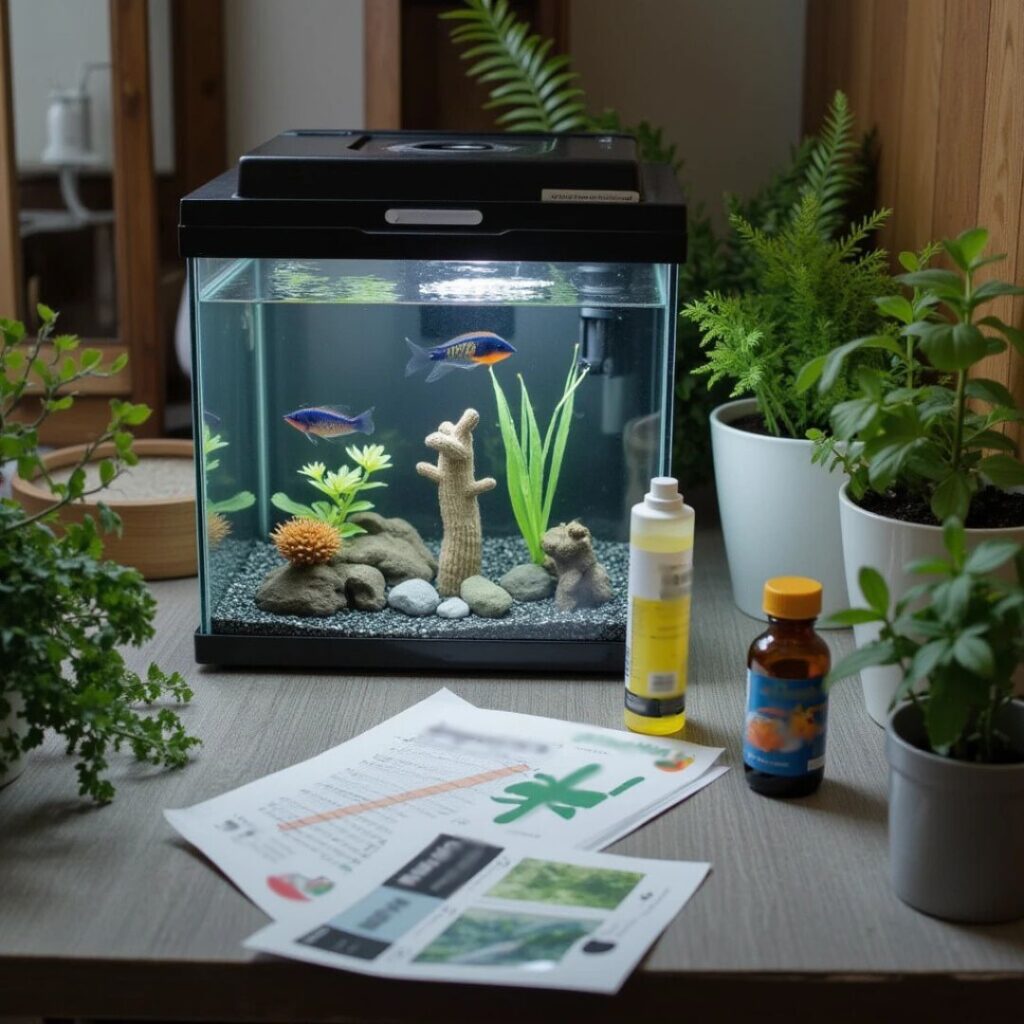
“New Tank Syndrome” is a major problem for fishkeepers. It happens when a new tank lacks beneficial bacteria. Without these bacteria, ammonia coming from fish waste and food builds up, followed by nitrite. Both are toxic to fish, even at low levels
New tank syndrome is deadly. It can kill fish in 24-48 hours. Sick fish may gasp, have clamped fins, or swim erratically. They’re suffocating due to ammonia and nitrite burning their gills which reduce their ability to take oxygen.
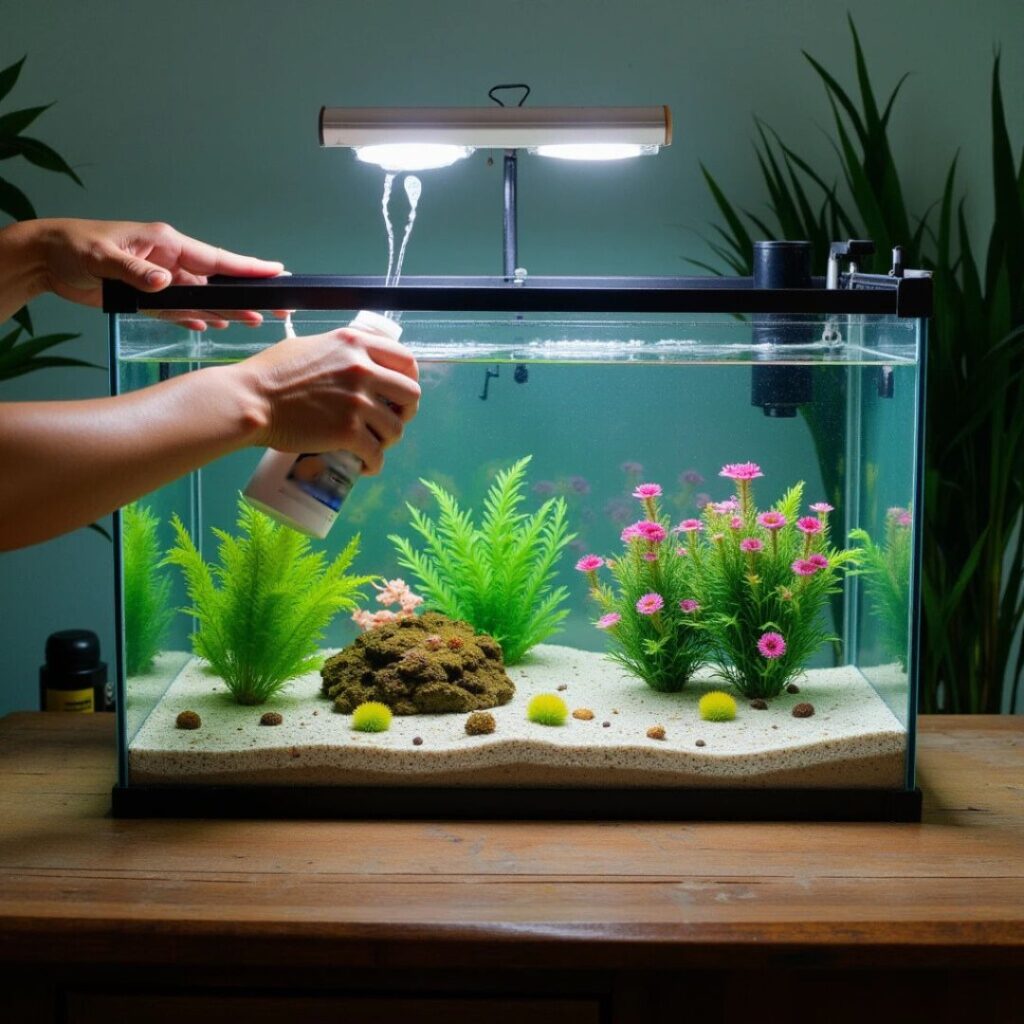
Tank Nitrite spikes can happen for many reasons. These include new tanks, overfeeding, or not keeping up with maintenance. In a healthy tank, bacteria turn nitrite into nitrate. But if this process is disrupted, nitrite can quickly build up.
Pro Tip: Always recheck your water after a few hours to be sure the nitrite levels are dropping.
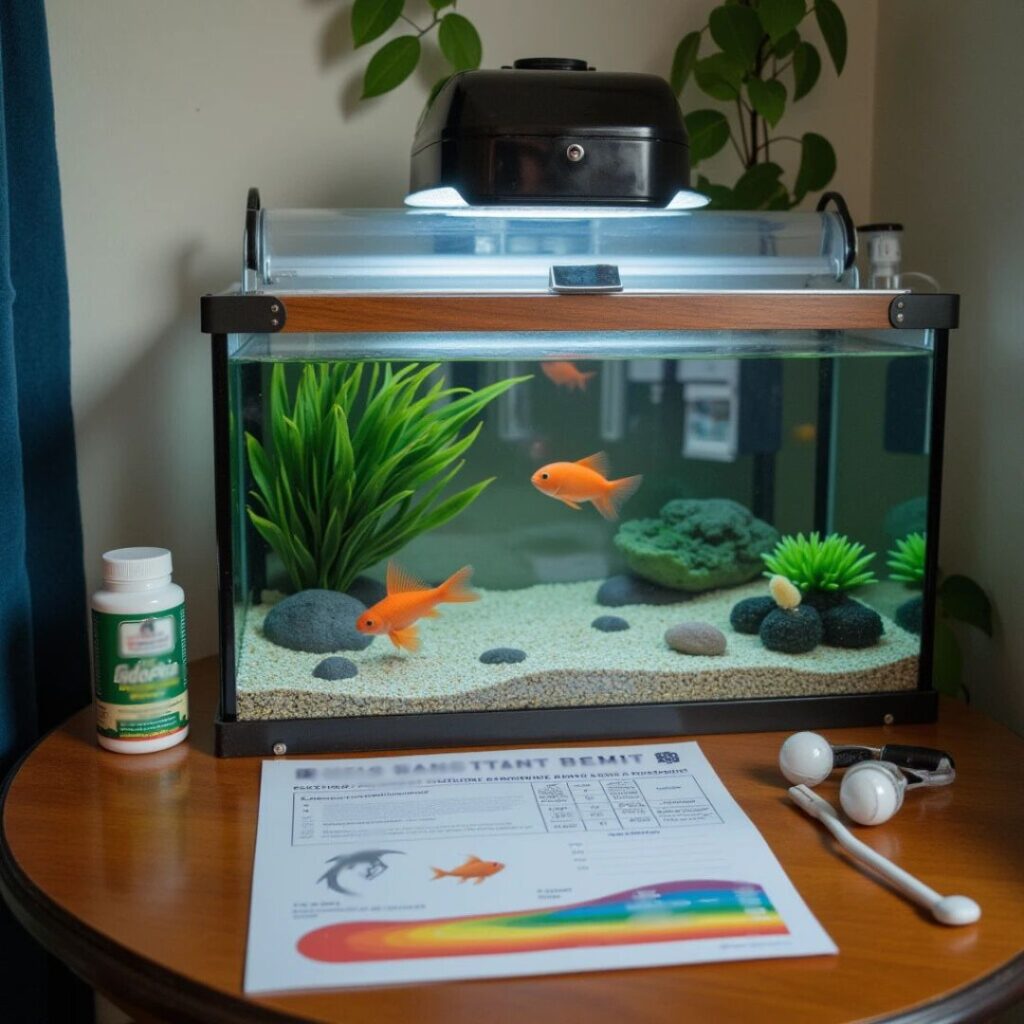
Ammonia, nitrite, and nitrate it’s the nitrogen cycle. This cycle keeps your tank’s water safe. Fish waste, uneaten food, and decaying plants produce ammonia. The Bacteria in your filter convert this ammonia into nitrite, and then another set of bacteria turn the nitrite into less harmful nitrate. The cycle is complete.
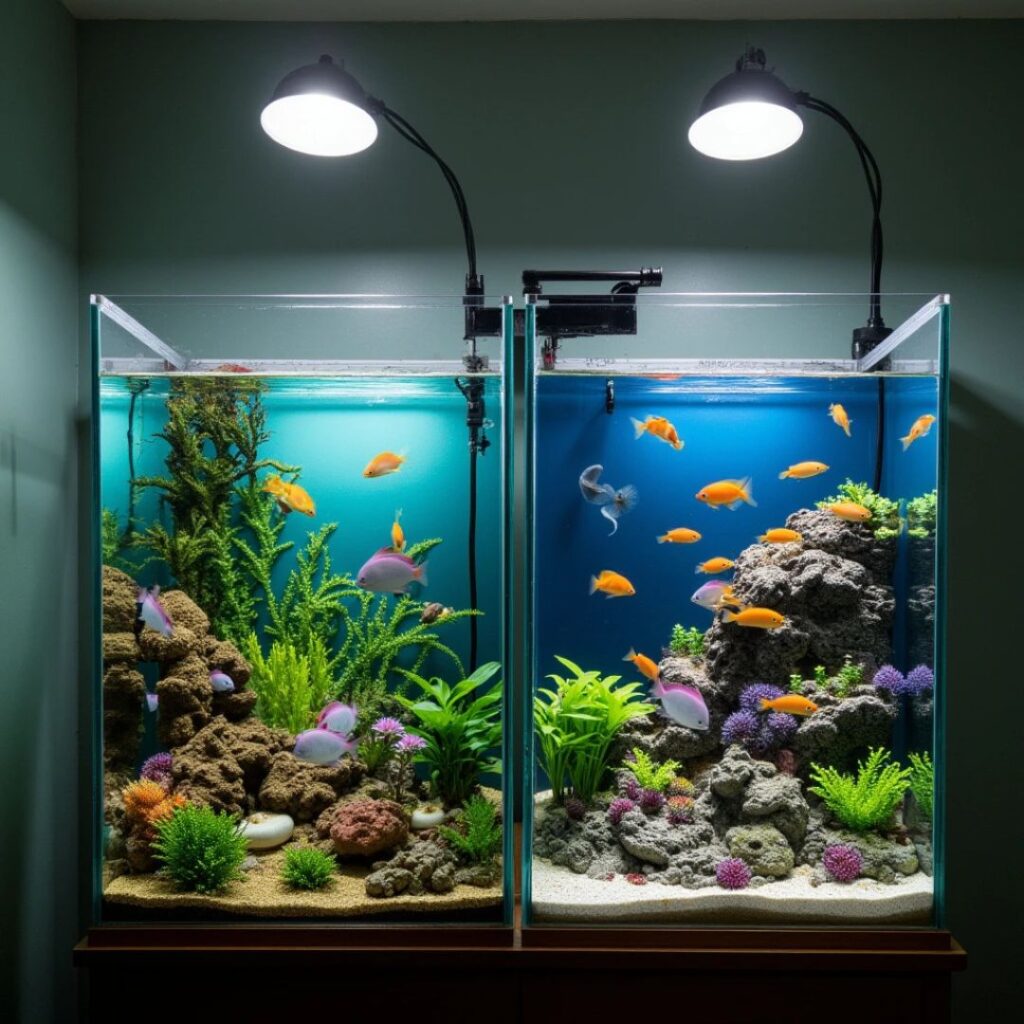
Avoiding common mistakes is key to keeping your fish safe and healthy. Here are a few to watch out for:
Keeping your fish tank’s water in balance can feel difficult. But with patience and regular practice, it becomes a second nature. Managing GH, KH, ammonia, nitrite, and nitrate isn’t complicated—you just need to stay on top of things with water testing and maintenance. Follow these steps, and you’ll avoid nasty surprises like new tank syndrome and create a thriving, happy environment for your fish.
Sign up for our newsletter and receive the next story before it is lunched
Our blog is made with love to give you advice on how to take care of your beloved pets and to help you learn everything about their stories